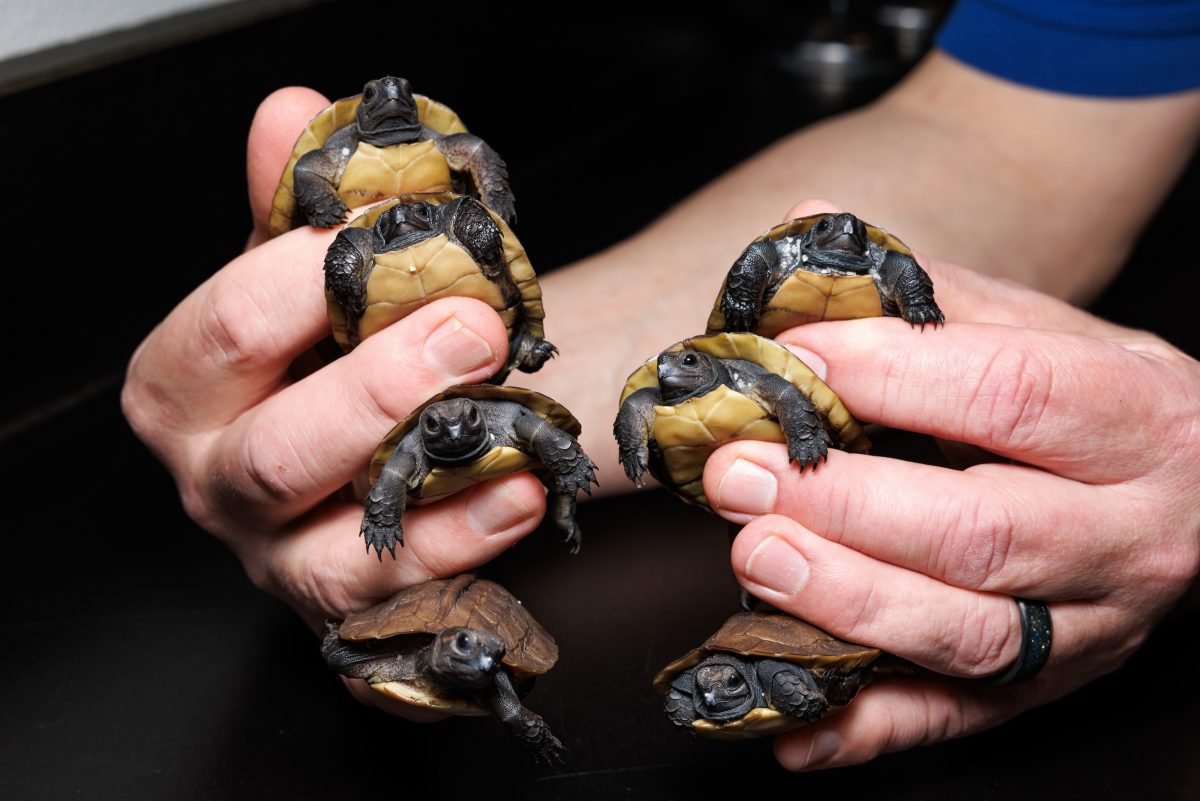For many of the Aquarium’s animal care specialists and aquarists, you don’t have to look far to find evidence of their dedication to their work.
The proof is inked on their skin.
Tattoos were once a prickly subject, but their popularity has soared over the last 20 years, especially among young Americans. Nearly a third (32%) of the country’s adults — and more than half (56%) of women ages 18 to 29 — have at least one tattoo, according to a 2023 Pew Research Center poll.
That statistic bears out at the Aquarium, where many staffers are inked. As with many tattoos, the designs they chose are often deeply personal.
From native fishes to Malagasy mammals, the Aquarium’s animal caregivers point to a wide range of reasons for choosing to get a tattoo related to their work. For some, it’s a representation of their calling. Others see their skin as a canvas for remarkable animal-themed artwork.
Whatever the style or subject matter, dedication to the animals in their care is a common motivation for many.
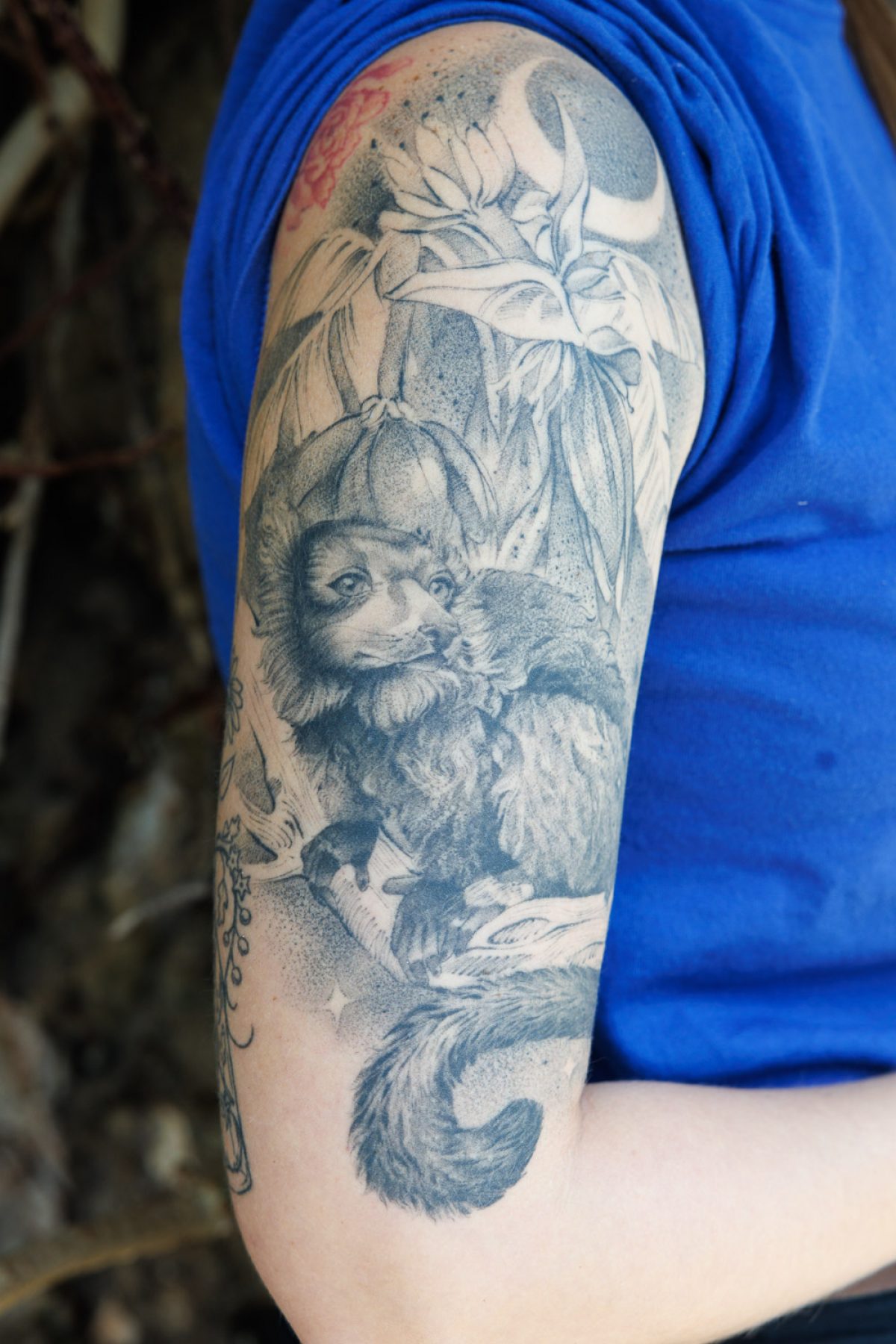
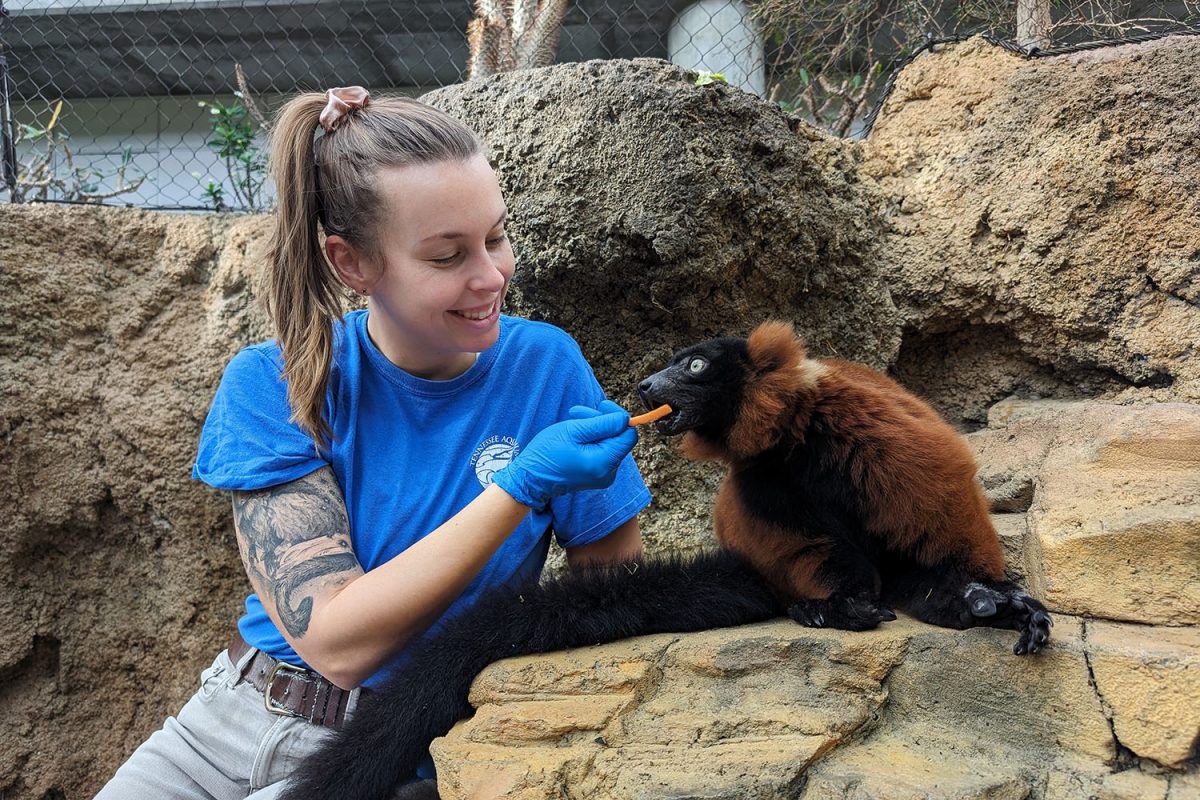
Senior Animal Care Specialist Maggie Sipe has a tattoo of Lyra the Red-ruffed Lemur.
Hearts on the line
“We put our whole heart and soul on the line for what we do,” says Senior Animal Care Specialist Maggie Sipe. “I think that’s why our tattoos mean so much to us and why so many of us have tattoos of something that we also do as our career.”
Sipe takes care of the Aquarium’s Ring-tailed, Red-ruffed, and Red-collared Brown Lemurs in the Lemur Forest exhibit. She got a tattoo of Lyra, the facility’s 16-year-old female Red-ruffed Lemur, on her right shoulder in 2021.
Created in black-and-white ink in a portrait style, the work depicts Lyra perched on a tree branch against dense foliage, gazing thoughtfully into the distance as the moon eclipses the sun overhead.
Sipe’s passion for lemurs began during her internship at the Indianapolis Zoo, where she says she got “stuck” working with the facility’s lemurs, something that, at the time, wasn’t particularly appealing to her.
She met the zoo’s troop of three older, male Red-ruffed Lemurs there. The experience of working with that trio changed the trajectory of her career.
“They just lounged in the sun and lived such peaceful, quiet lives,” Sipe says. “I absolutely fell in love with their personalities, demeanor, and the species as a whole.”
Though she went on to work with other species, Sipe always wanted to return to working with lemurs. After being hired for her current role at the Aquarium, she saw that wish fulfilled, and Lyra captured her attention like no one else.
“Lyra has probably been the light of my life,” Sipe says. “She takes good care of her brother Avior, who I’ve always adored, and she has been extraordinary to work with.”
Sipe’s deep affection for Lyra and admiration for her charge’s patient and kind personality inspired her to permanently ink Lyra’s portrait on her arm.
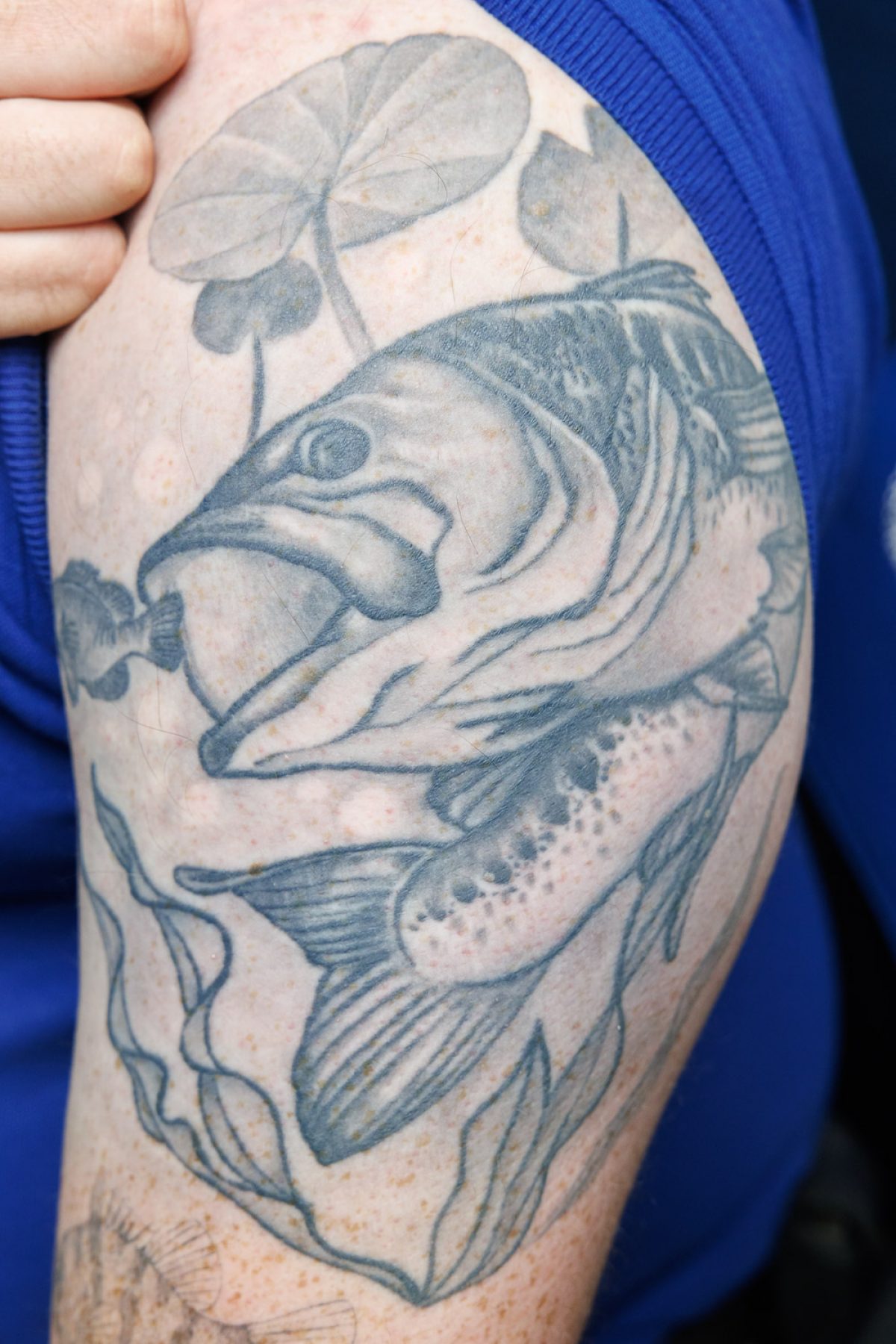
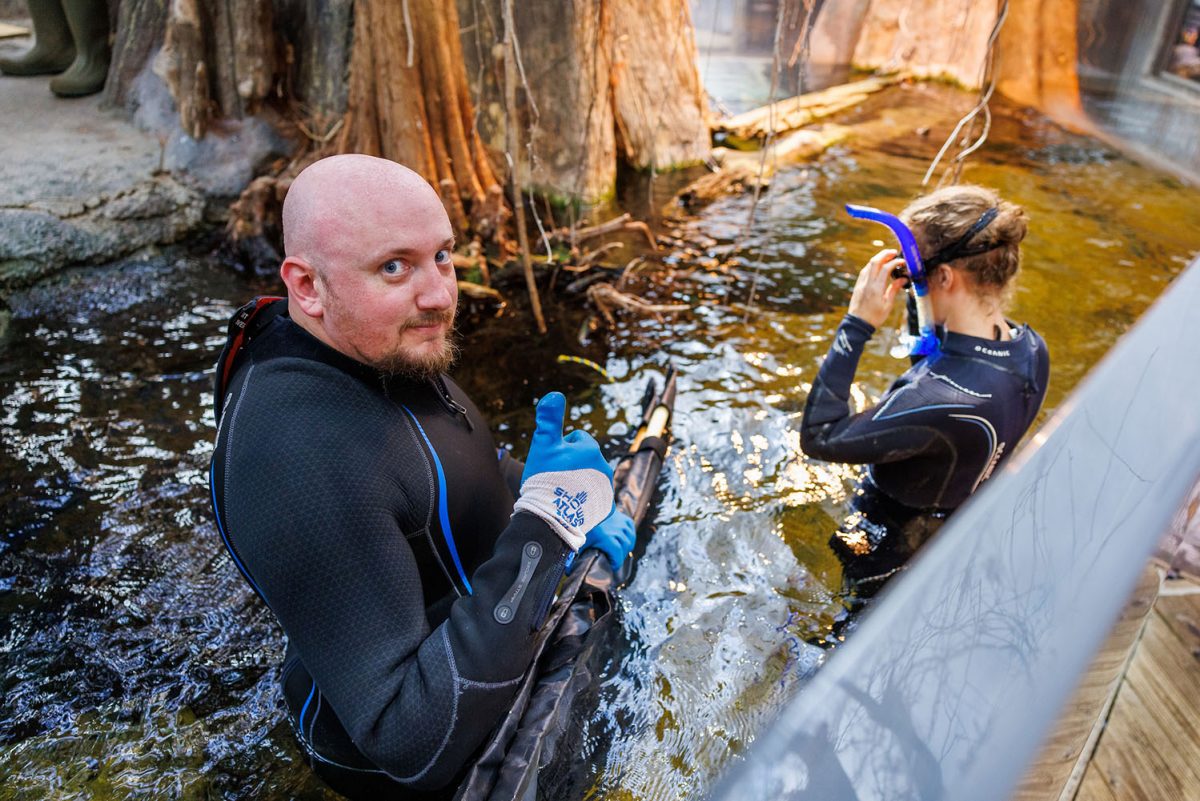
Senior Aquarist Stephen Beaman's tattoo of a Largemouth Bass.
Angler admiration
For Senior Aquarist Stephen Beaman, a passion for fishkeeping and his angler upbringing motivated his decision to get three fish tattoos on his left arm.
The largest is, fittingly, of a Largemouth Bass, while two smaller tattoos feature a Black-banded Sunfish and a pair of Fieryblack Shiners. All three are in black-and-white, though the Fieryblack Shiners feature the addition of the species’s trademark red “lipstick” and tail coloration.
“I got the bass because I grew up a big bass fisherman,” says Beaman. “Then the Black-banded Sunfish and Fieryblack Shiners I got because they are two of my favorite species of fish.”
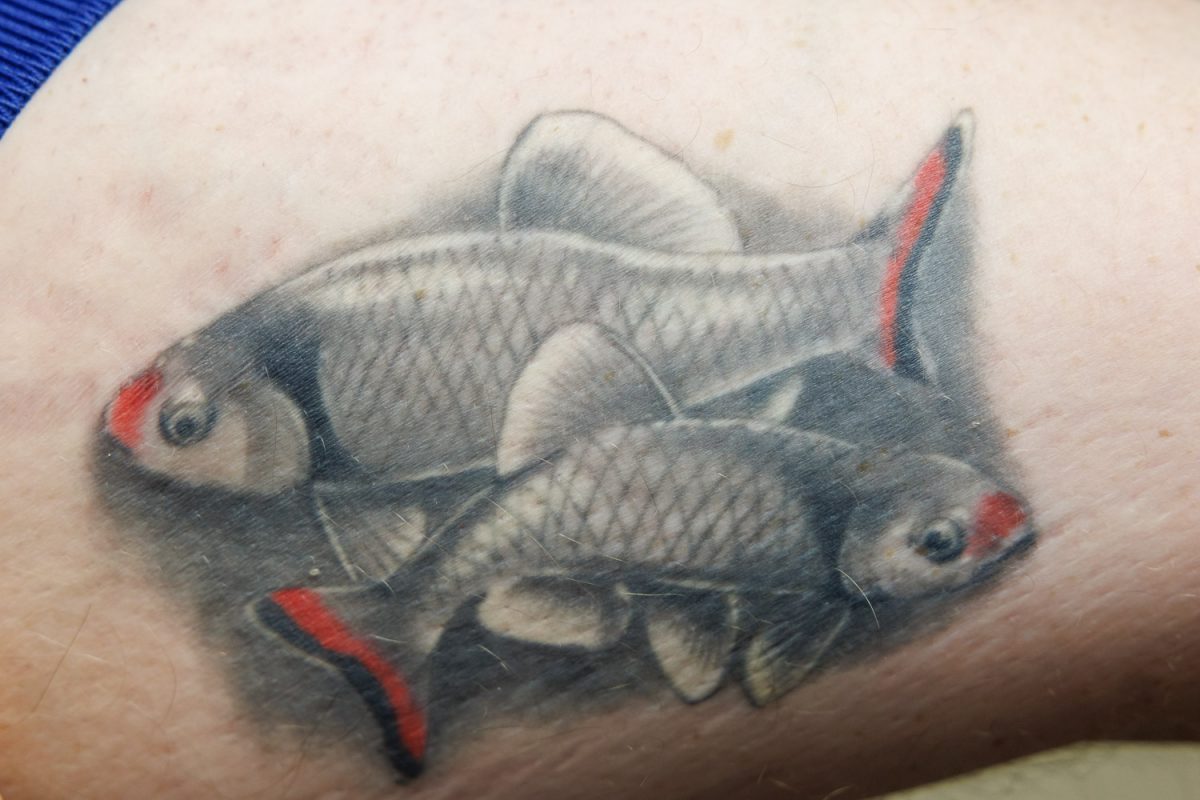
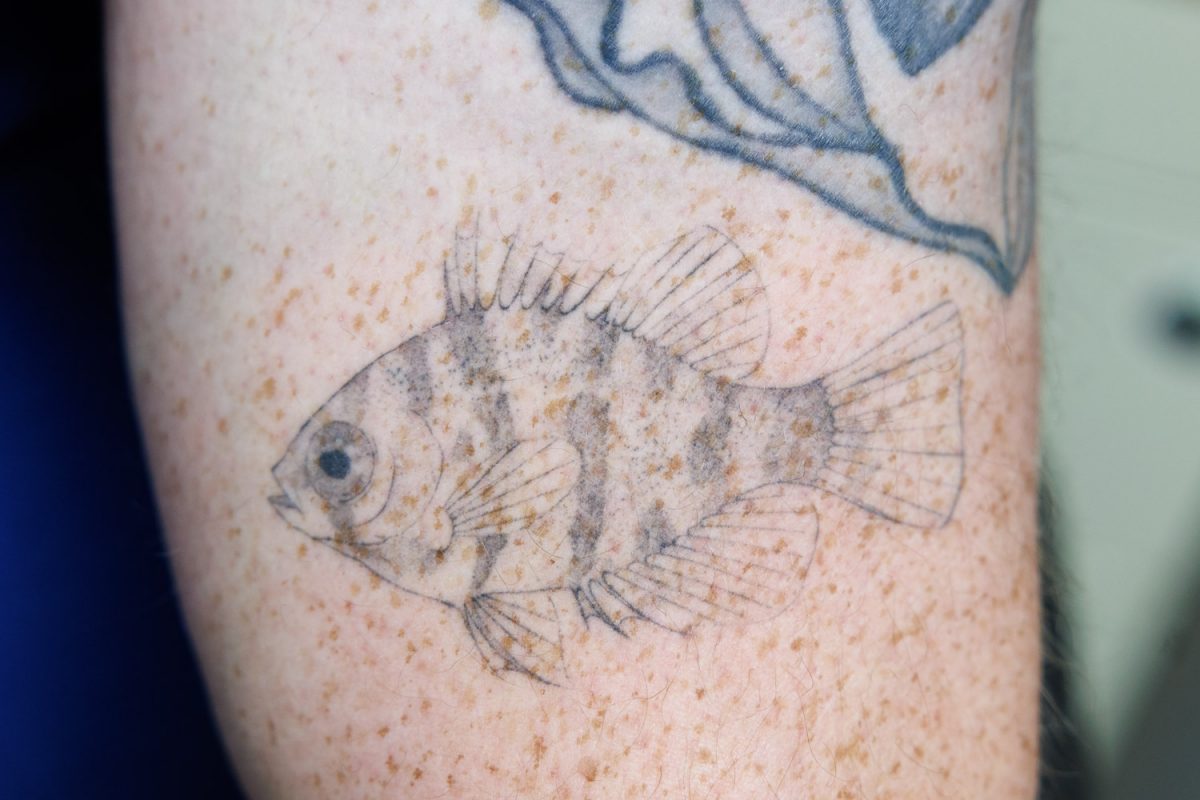
Beaman's tattoos of a Black-banded Sunfish and Fieryblack Shiners.
Hailing from South Carolina, Beaman wanted his tattoos to feature some of that state’s native fishes.
While an aquarist’s duties and angling might seem at odds, Beaman says they aren’t incompatible. For many people — especially in the South — fishing is often their first experience seeing and appreciating fish, and it can inspire a passion that lasts a lifetime.
“I grew up fishing, and then I started going out into streams and collecting fish with nets,” Beaman says. “Then I started keeping fish in aquariums at home, and it just grew from there.”
There’s more fish in the river, so to speak, though, and Beaman has plans for another tattoo. He’ll soon add another species in his care at the Aquarium, a Spotted Gar, to his left forearm.
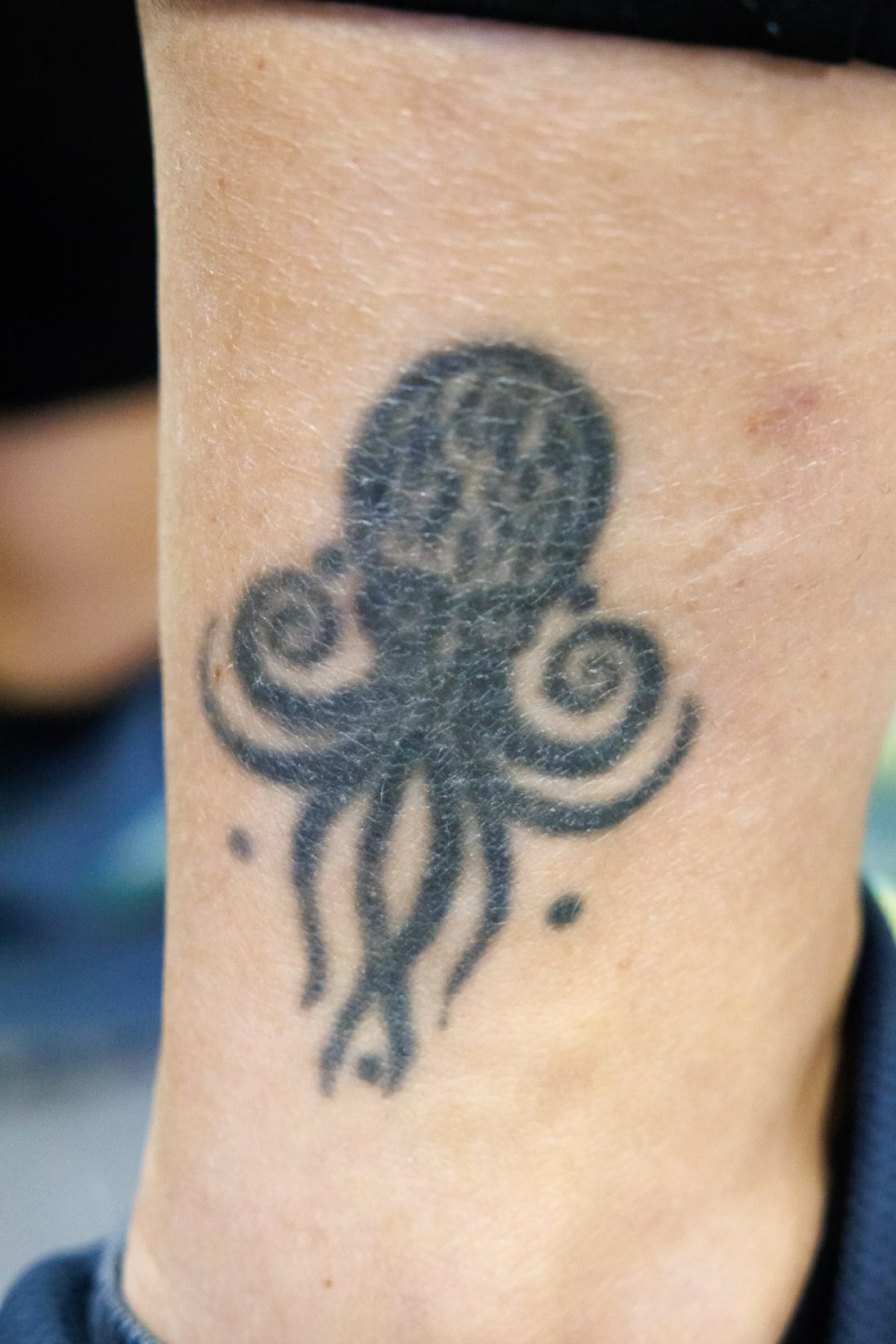
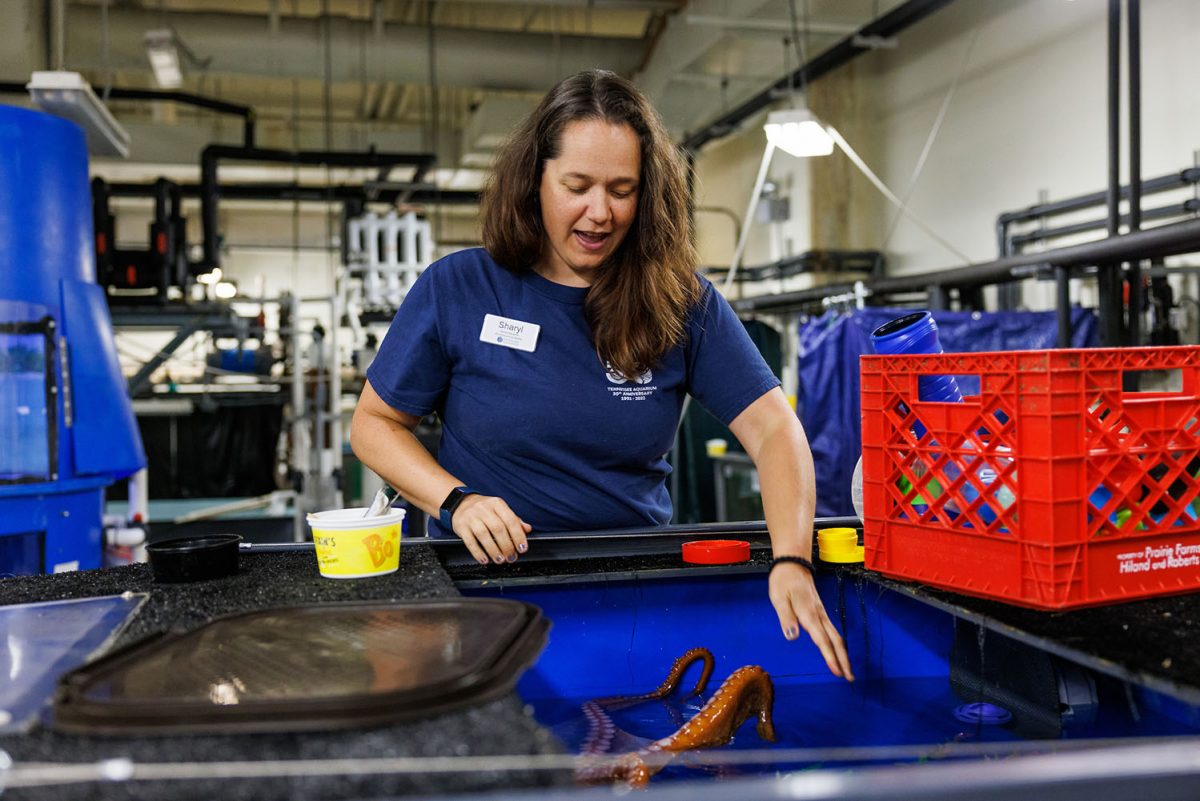
Senior Aquarist Sharyl Crossley has a tattoo of an octopus in a tribal style.
Long before she began caring for them at the Aquarium, Senior Aquarist Sharyl Crossley got an octopus tattoo on her right ankle to memorialize one of her earliest animal experiences.
Inked in black and white, the small piece is a stylized design – rather than an anatomical or portrait creation – featuring thick linework.
“It’s kind of in a tribal style because I’m a Gen X-er, and that was cool back then,” she jokes.
In college, Crossley embarked on a road trip from Wichita, Kansas, to San Diego, where she first saw the Pacific Ocean. While exploring tide pools, she saw her first wild octopus and was so struck by the experience that she wanted a tattoo to remember it.
“Getting to see one in the wild before I ever worked with an octopus was really cool,” she says.
Now, Crossley gets to work daily with a Giant Pacific Octopus in her role overseeing the Aquarium’s “Quarantine Room,” which serves as temporary living quarters for new arrivals.
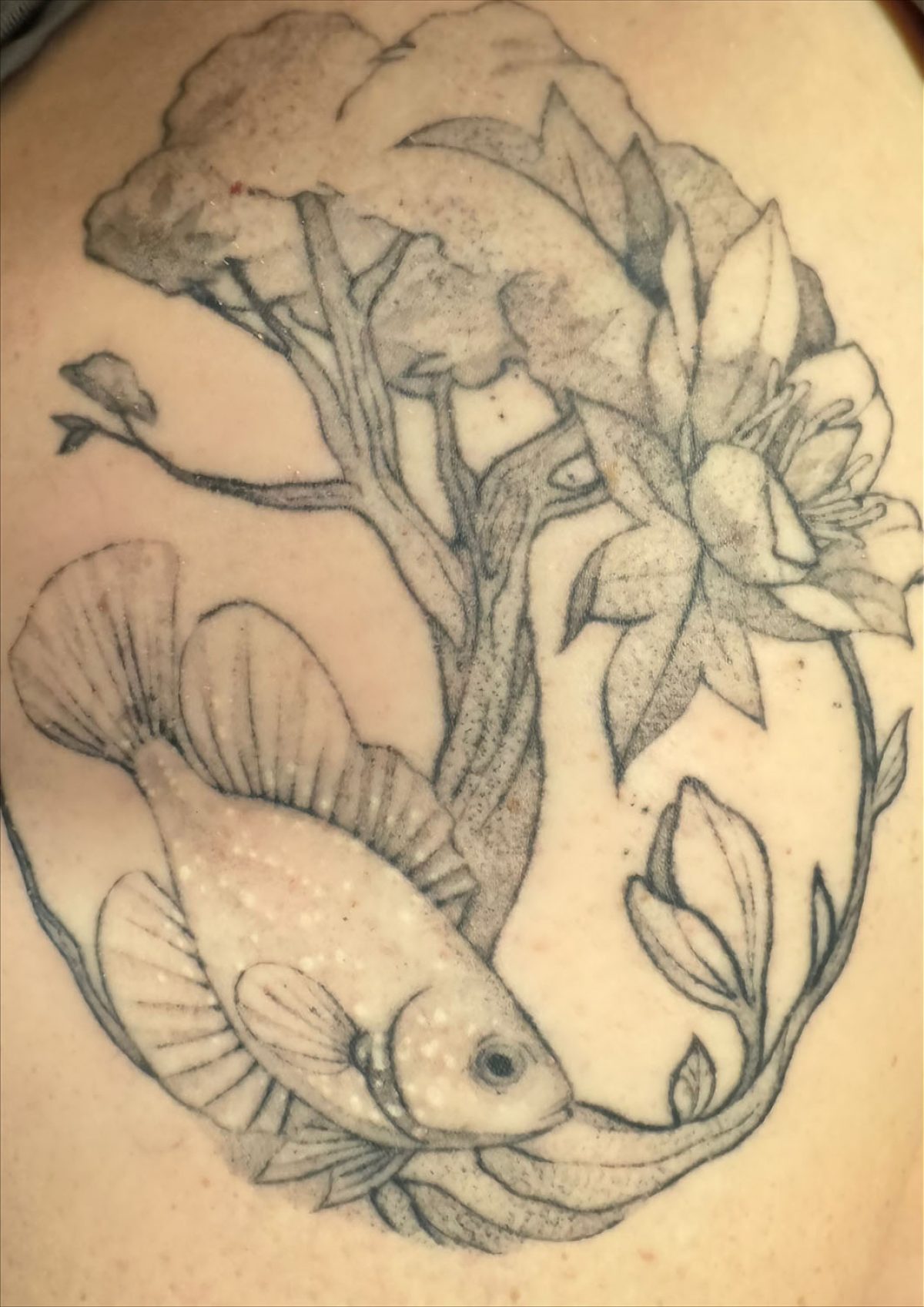
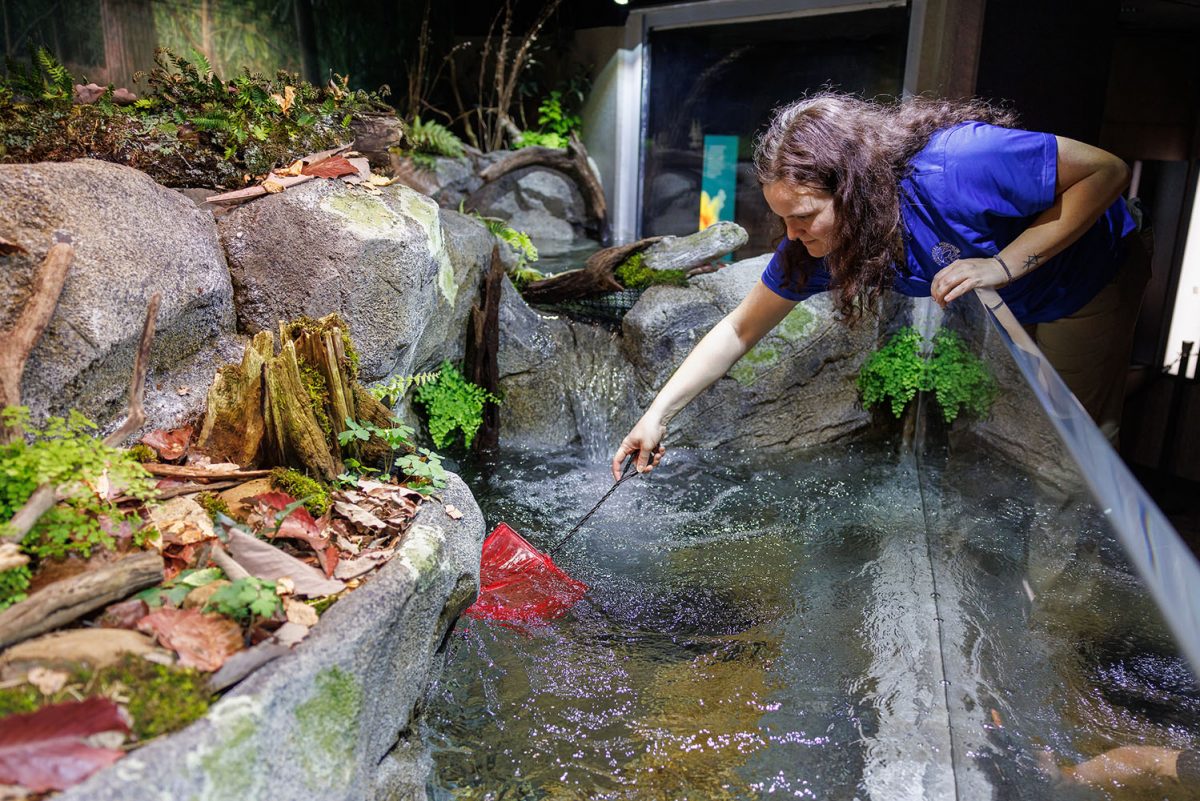
Senior Aquarist Avery Millard has a tattoo of a Blue-spotted Sunfish.
Senior Aquarist Avery Millard opted for a tattoo of a Blue-spotted Sunfish with a Tulip Poplar in the shape of the tree of life, a mythological iconography depicting a many-branched tree symbolizing themes like life, eternity, and immortality.
Millard cared for these sunfish in the Aquarium’s Sunfish Celebration exhibit, formerly located in the Discovery Hall gallery (now Ridges to Rivers). Thanks to their captivating beauty and native origins, they quickly became one of her favorites.
She wanted to incorporate the tree of life’s motif of interconnectivity, and she selected the Tulip Poplar because it is Tennessee’s state tree.
Millard hopes to get a sturgeon tattoo — another one of the animals in her care and one of the first fish she ever worked with — echoing the overhead view of a koi as typically presented in wabori, a traditional Japanese tattooing style.
For Millard, her personal connection to her work at the Aquarium – and its conservation impact on the region – was so meaningful that she wanted it reflected in a tattoo.
“I think that I wouldn’t do this as a job if I didn’t like it personally,” Millard says. “It’s important to me: our wildlife and our local ecosystems. I think that they’re beautiful fish, and I wanted something beautiful on my body forever.”
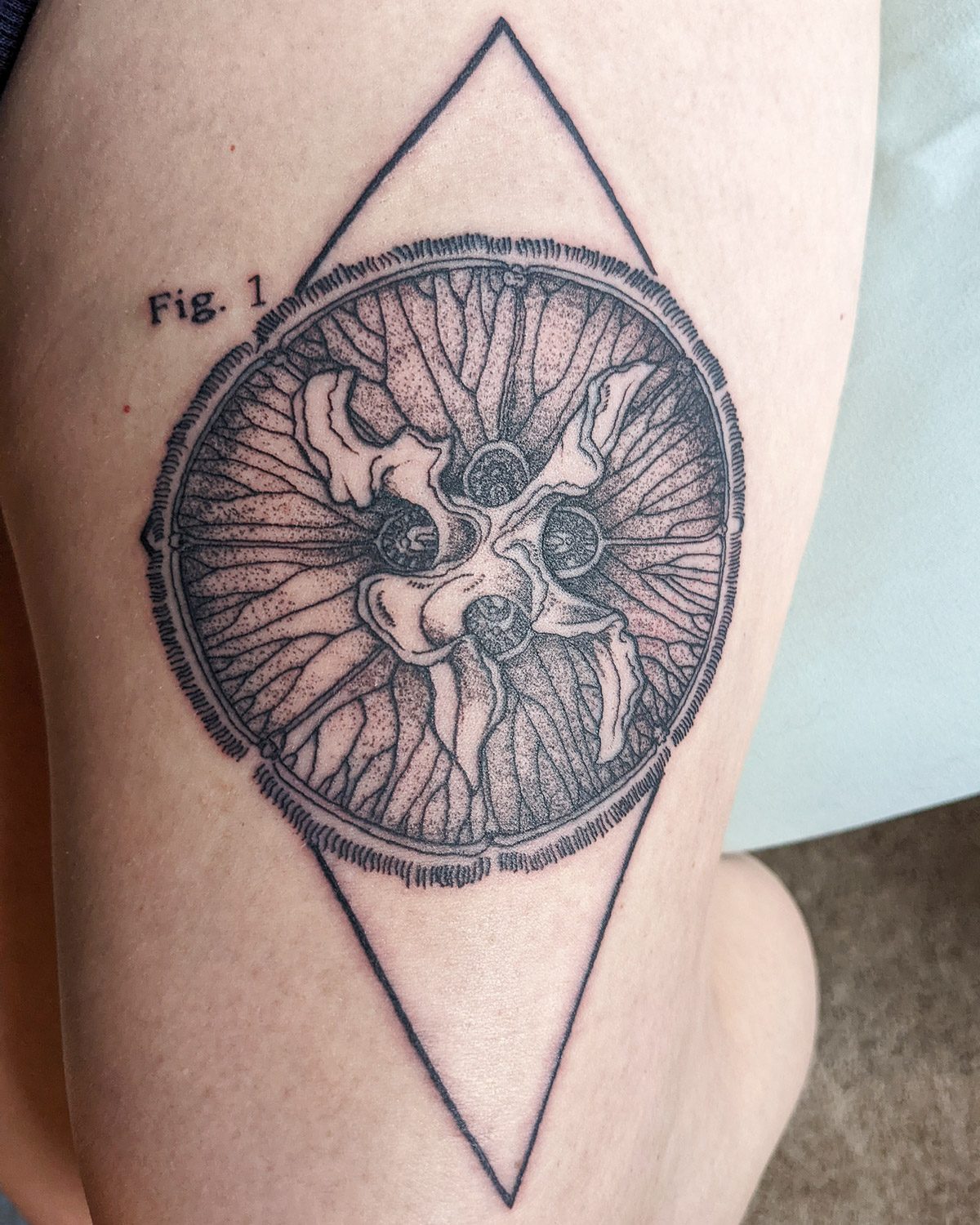
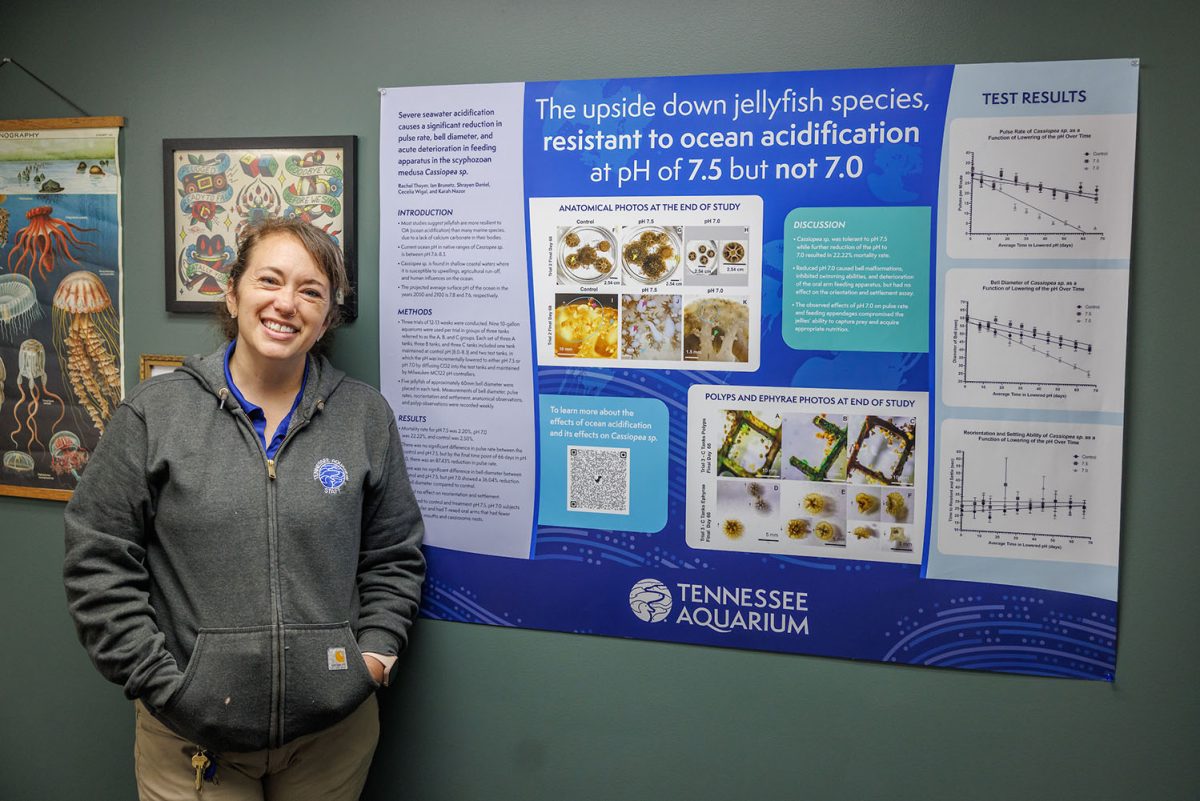
Assistant Curator of Fishes Rachel Thayer has a tattoo of a Moon Jellyfish.
Celebrating science
While tattoos are often remarkable works of art, they can also be powerful reminders of Aquarium team members’ accomplishments in their fields.
For Assistant Curator of Fishes Rachel Thayer, her tattoo of an upside-down Moon Jellyfish celebrates a significant professional milestone and scientific achievement.
Styled like an illustration from a scientific textbook or a natural historian’s field journal — complete with a “Figure 1” caption — Thayer got the tattoo on her left thigh to celebrate her 2022 publication in a scientific journal of a study into the effects of ocean acidification on
Upside-down Jellyfish. She thought a Moon Jelly would be a more recognizable species for the tattoo, but the artwork’s upside-down orientation was a subtle nod to the subject of her research.
Moon Jellies are also personally significant to Thayer’s role at the Aquarium, where she has worked with them for the last eight years.
“I spend a lot of time culturing and raising Moon Jellyfish, specifically,” Thayer says. “Most of my career has been spent raising Moon Jellies.”
Thayer is drawn to the species in part because of its oddity.
“I’m a weird person with a weird personality, and I think that jellies are pretty weird, too,” she says. “I kind of get them, and I feel like they get me … as much as a jellyfish can.”
Whatever their reasons for permanently inking their work onto their skin, Aquarium team members’ tattoos are more than just skin deep. They are a visible testament to their passion and dedication.
Each design tells a unique story, commemorating the bond between the caregivers and the animals they’ve nurtured, studied, and come to love. Whether inspired by a life-changing encounter or a commitment to animal care, these tattoos symbolize a lifelong devotion to understanding and protecting the natural world.
For these aquarists and animal care specialists, their ink isn’t just art; it reflects their hearts, proudly worn on their sleeves.

